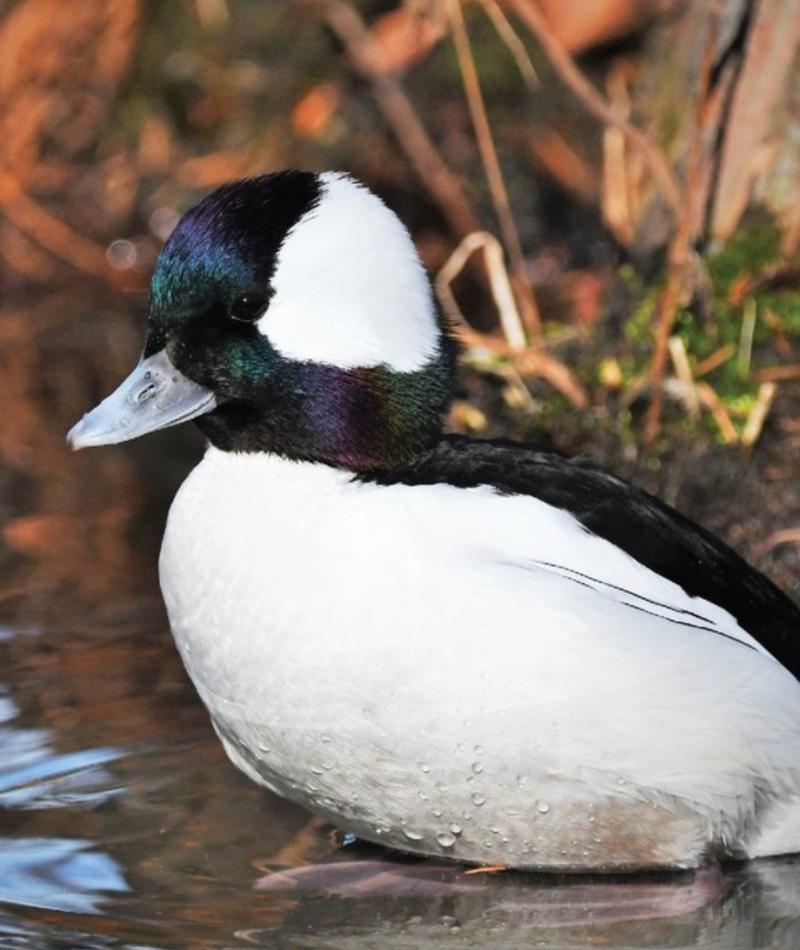
Bufflehead Duck
Bucephala albeola
Did you know?
- These energetic little ducks prefer to live in well-forested ponds or swamps.
- In the summer, they hunt insects and small crustaceans. But in the winter, they eat the seeds of aquatic plants.
- Uniquely, buffleheads nest in the holes found in trees.
- Males attract a female by bobbing its head, lifting its wings and displaying crest feathers.
- Females usually lay eight to 10 eggs.
Diving Ducks
Buffleheads are expert divers, able to stay under water for more than a minute, then often popping up a long way from where they disappeared. One duck usually remains on the surface to watch for danger as the rest of its group dives for food.
What's in a Name?
The large ("buffalo"-sized) head of this diving duck is said to have earned the species its name. The male is black on top and white on bottom, and his black head sports a large white patch extending from the eye to the back of the head. The female is dark brown above, paler below and has a small white cheek patch.
Threat Level
- Unknown
- Common
- Near Threatened
- Threatened
- Endangered
- Critically Endangered
- Extinct in the Wild
Common
The Bufflehead Duck is widespread and abundant.
Range
North America
Habitat
Lakes, ponds, rivers, swamps

We care about Bufflehead Ducks
The Saint Louis Zoo supports bufflehead ducks in the Cypress Swamp. Learn more about how we are helping wildlife around the world.
Find this animal in The Wild

SAINT LOUIS ZOO ZONE
The Wild
You’ll find penguins, puffins, grizzly bears, gorillas, chimpanzees, to name a few. And while visiting, you can take a ride on the Conservation Carousel or hop aboard and ride the Zooline Railroad. There are also gift shops and eateries you can enjoy.

